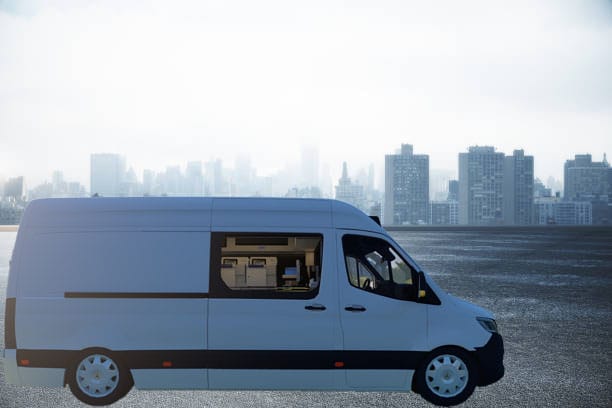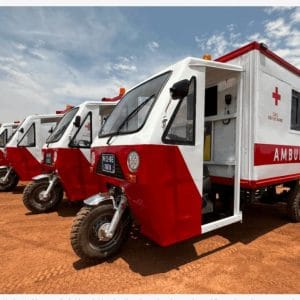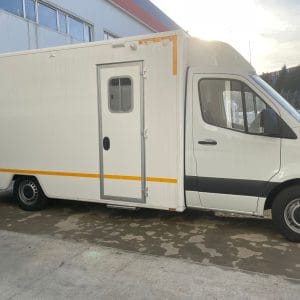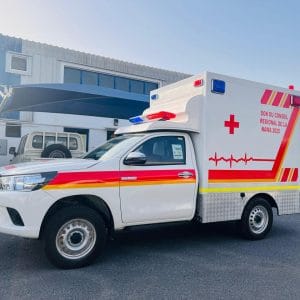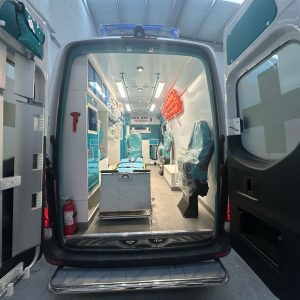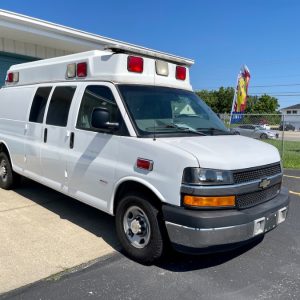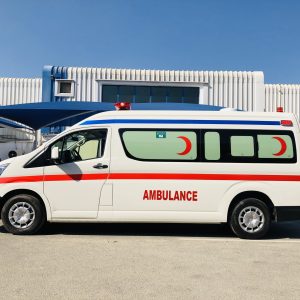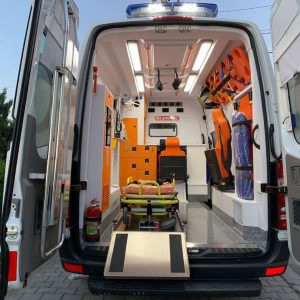The Mobile Laboratory Mini Van; In the critical fields of environmental science, public health, and emergency response, the ability to analyze water samples directly at the source is a game-changer. Waiting for results from a distant, central laboratory can mean delayed actions and potential risks to communities and ecosystems. The solution? A Mobile Laboratory Mini Van—a purpose-built, rolling laboratory designed to bring sophisticated analytical capabilities anywhere, anytime.
This article provides a deep dive into the specifications, components, and operational benefits of a fully integrated Laboratory Mini Van, engineered for comprehensive field-based water quality testing.
1. The Vehicle Platform: Rugged Reliability for Demanding Terrains
The foundation of an effective mobile lab is a vehicle that is both dependable and capable. This Mini Van is built on a chassis designed for durability and stability, ensuring it can reach remote sampling sites with confidence.
- Powertrain and Performance: At its heart is a robust 2.2-2.5 litre, 4-cylinder diesel engine with Common Rail Direct Injection. This setup delivers high torque (400 Nm), providing the necessary power for all-wheel drive (AWD) systems and challenging road conditions. The 6-speed manual transmission offers drivers full control over the vehicle’s power, essential for off-road or steep, unpaved access routes.
- Safety and Handling: Safety is paramount. The van is equipped with a comprehensive braking system featuring Ventilated Discs (front) and Drum Brakes (rear), augmented by Anti-lock Brakes (ABS), Brake Assist (BA), and Electronic Brake Force Distribution (EBD). Combined with Hydraulic Power Steering and a double-wishbone front suspension, this ensures stable and responsive handling even with a full load of sensitive equipment.
- Dimensions and Capacity: With a wheelbase of 3100-3200mm and a Gross Vehicle Mass (GVM) not exceeding 3,300 kg, the platform offers a stable and spacious interior without being unwieldy. Key dimensions (Length: ~5300mm, Width: ~1800mm, Height: ~2200mm) and a generous ground clearance (~1650mm) make it adaptable to both urban and rough-terrain environments.
2. The Mobile Laboratory Interior: A Purpose-Built Workspace
The interior of this van is transformed from a passenger carrier into a functional, efficient, and safe mobile laboratory.
- Utility and Comfort: The cabin is fitted with L-shaped cabinets that provide ample storage for instruments and glassware while maximizing space. An in-built sink with dedicated clean water and waste water tanks (20L each) is crucial for on-site cleaning and sample preparation. Two 30-litre mini fridges allow for the safe, temperature-controlled storage of sensitive samples and reagents.
- Durability and Cleanliness: The floor is lined with a 3mm thick natural or synthetic rubber material. This non-slip, chemical-resistant surface is easy to clean and decontaminate, protecting the vehicle’s base and ensuring a hygienic work environment. Stools and a waste bin are standard, completing the functional workspace.
- Power for Instruments: The van is fitted with 220V power outlets, allowing field scientists to operate essential lab equipment like the digital flocculator jar test kit and water bath directly from the vehicle, independent of external power sources.
3. Core Analytical Equipment: The Science on Wheels
This mobile lab is equipped to perform a wide range of water quality tests, making it a self-contained analysis station.
3.1. Microbial Contamination Testing
Rapid detection of bacterial contamination is vital for public health.
- Portable Microbial Kit: The van carries two portable kits capable of measuring E. coli and Total Coliforms—key indicators of fecal pollution. These kits include a handheld vacuum pump for filtration, portable incubators, and pre-prepared media like Lauryl Sulphate in 50mm Petri dishes, enabling quantitative analysis in the field.
3.2. Physical and Chemical Parameter Analysis
A suite of portable meters provides instant, accurate readings of fundamental water properties.
- Digital Turbidimeter: This instrument measures water cloudiness (turbidity) using a 90° scattered light principle, with a range of 0-400 NTU. High turbidity can indicate pollution and protect pathogens from disinfection.
- Multi-Parameter Meters: The lab includes meters for pH, Conductivity, Total Dissolved Solids (TDS), Dissolved Oxygen (DO), and Salinity. These devices are waterproof, feature automatic temperature compensation, and allow for easy multi-point calibration, ensuring data reliability.
- Heavy Metals Photometer Kit: A critical component for environmental monitoring, this portable photometer can test for dangerous metals like Lead, Arsenic, Copper, Manganese, and Zinc. Using reagent tests, it provides on-the-spot quantitative data, which is essential for identifying industrial pollution or natural geochemical contamination.
3.3. Supporting Laboratory Glassware and Equipment
No lab is complete without the essentials for sample handling and processing.
- Sample Collection and Storage: The van is stocked with 60 BOD glass sampling bottles (250ml) and 80 Petri dishes (50mm), along with two lockable 50-litre cooler boxes to maintain the cold chain for samples during transport.
- Glassware for Analysis: A full complement of beakers (250ml to 1000ml) and measuring cylinders (50ml to 1000ml) supports a wide variety of wet chemistry procedures and sample preparation.
- Jar Test Apparatus: A 6-8 stand jar test kit with a digital flocculator is included. This is used to simulate the coagulation-flocculation process in water treatment plants, helping operators determine the optimal chemical dosages for clearing turbid water.
4. Essential Reagents and Safety Features
To be truly autonomous, the van carries a comprehensive inventory of consumables.
- Reagent Test Tablets: Over 3,000 reagent tests in blister packs are supplied for a full spectrum of analyses, including tests for Total Hardness, Alkalinity, Iron, Manganese, Copper, Lead, Calcium, Nitrate, Ammonia, and Phosphate. This allows for hundreds of individual tests to be performed without immediate resupply.
- Integrated Safety Systems: The mobile lab is prepared for emergencies. It includes a 2.5kg fire extinguisher, breakdown triangles, a comprehensive first aid kit secured in a lockable metallic box, and a jack and tool kit for minor vehicle maintenance.
5. Operational Advantages and Applications
The integration of a capable vehicle with a full laboratory setup creates a powerful tool with numerous applications:
- Rapid Emergency Response: In the event of natural disasters or chemical spills, the unit can be deployed immediately to assess the safety of drinking water sources.
- Environmental Monitoring: Regular monitoring of rivers, lakes, and groundwater sources for compliance and pollution tracking.
- Public Health Surveillance: Testing municipal water supplies in remote towns or informal settlements to prevent waterborne disease outbreaks.
- Research and Data Collection: Providing scientists with a stable platform for extended field campaigns in remote locations.
Conclusion: More Than a Van, A Mission-Critical Asset
The Laboratory Mini Van is a testament to the power of integrated design. It is not merely a vehicle with some equipment thrown in; it is a meticulously planned mobile asset where every component—from the AWD chassis and rubber-lined floor to the heavy metals photometer and reagent stocks—serves the singular purpose of delivering reliable scientific data from the field.
By eliminating the delay between sample collection and analysis, this mobile lab empowers governments, research institutions, and emergency services to make faster, more informed decisions, ultimately protecting public health and the environment with unprecedented efficiency.
Frequently Asked Questions (FAQ)
Q1: What is the primary purpose of this Laboratory Mini Van?
A1: It is designed as a self-contained, mobile unit for comprehensive water quality testing directly in the field. Its primary purpose is to provide rapid, on-site analysis for microbial contaminants (like E. coli) and chemical parameters (like heavy metals) without the need to transport samples to a central lab.
Q2: Why is an All-Wheel Drive (AWD) system and a diesel engine important for this application?
A2: Water sampling sites are often in remote or difficult-to-access locations, including rough terrain, muddy riverbanks, or unpaved roads. The AWD system provides the necessary traction, and the high-torque diesel engine ensures reliable power and durability in these demanding conditions.
Q3: Can the lab equipment operate without an external power source?
A3: Yes, the van is equipped with 220V power outlets that can be powered by the vehicle’s system or potentially an integrated inverter/generator (depending on final configuration). Key field instruments like the photometers and turbidimeter are also designed to be portable and battery-operated for use away from the vehicle.
Q4: How does the van ensure the safety of its operators and the integrity of samples?
A4: Operator safety is addressed through vehicle safety features (ABS, Airbags) and onboard emergency equipment (fire extinguisher, first aid kit). Sample integrity is maintained using lockable cooler boxes for transport and mini fridges inside the climate-controlled cabin for temporary storage.
Q5: What kind of tests can be performed for heavy metals, and how quickly are results available?
A5: The portable heavy metals photometer can test for lead, arsenic, copper, manganese, zinc, and calcium. Using pre-packaged reagents, these tests provide quantitative results in a matter of minutes on-site, a significant advantage over lab-based analysis which can take days.


